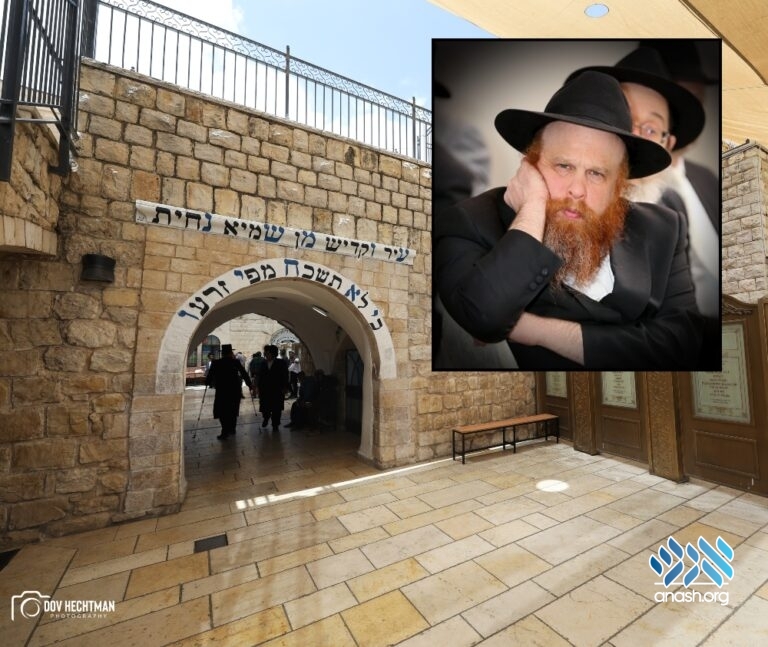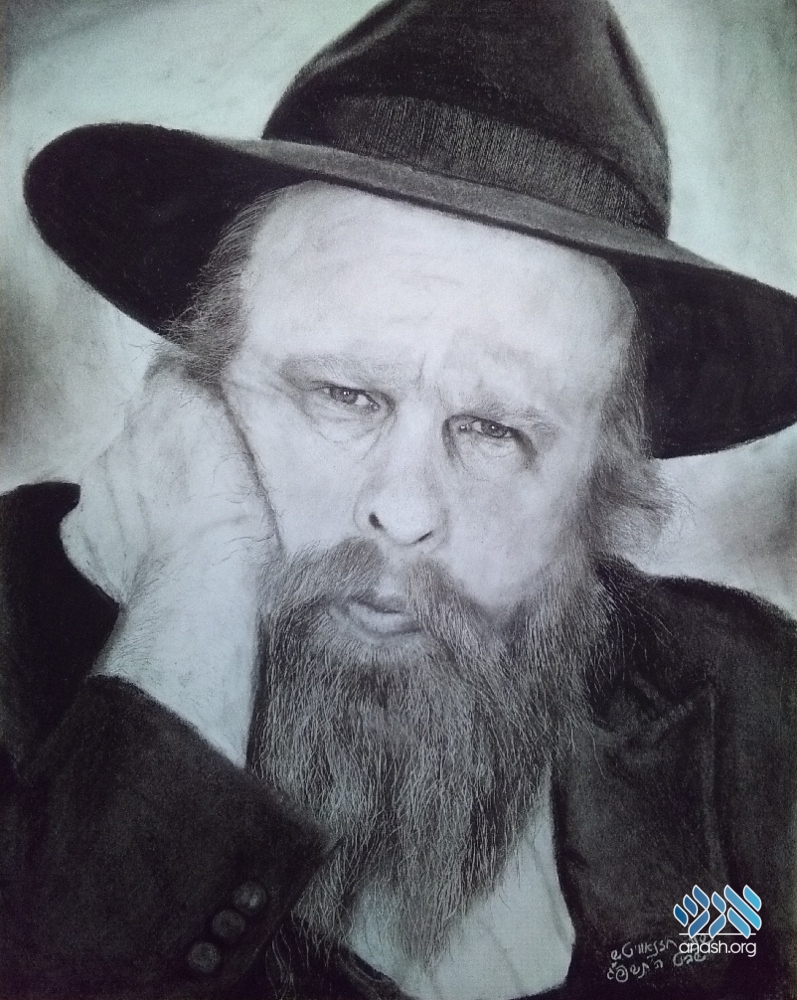Everyone is unique. Rabbi Akiva Wagner was uniquely one-of-a-kind. Memories and thoughts by his nephew and student, Rabbi Shmuel Wagner.
By Rabbi Shmuel Wagner
What does it mean to be “a giant”?
What does it mean to be “larger than life”?
What does it mean for one man to leave behind thousands of students, mushpa’im, pupils and protégés who each felt individually cared for in their own unique way?
Everyone is talking about Rabbi Akiva Wagner’s greatness, his love and care, his devotion and dedication, his brilliance and depth, his staunch and unwavering commitment – and for good reason.
“…[I am] overwhelmed by sadness for your personal loss and the world’s loss.”
“It sounds like he was an extremely loved rosh yeshiva and impacted a lot of lives…”
Monday evening, I got a call from someone in Australia who was on his ‘alumni’ list for the weekly email farbrengen. The thing is, this person is someone many years Rabbi Wagner’s senior, and himself a big talmid chochom and mashpia. But everyone gained from Rabbi Wagner; his sphere of influence was mind-bogglingly wide.
A wise man pointed out to me on Tuesday, since Reb Shlomo Chaim there is not one rosh yeshiva or mashpia about whom it can be said that he deeply affected, impacted, and gave lifelong direction and perspective to thousands of bochurim and yungeleit as Rabbi Wagner did. I would dare add, that unlike Reb Shlomo Chaim, Rabbi Wagner was a teacher of both Nigleh and Chassidus. Both a rosh yeshiva and a mashpia.
Everyone is unique. Rabbi Akiva Wagner was uniquely one-of-a-kind. Yochid Um’Yuchad.
His brilliance in Nigleh can only be appreciated by those of his caliber. I do not have the knowledge nor the vernacular to describe his level of genius. But, which Toronto Zal alumnus can forget his intense concentration and focus, pacing up and down the zal with his trademark furrowed brow minutes before delivering a shiur? A sure sign of someone with true yegi’ah, in the words of this week’s Rashi, “Shetih’yu ameilim b’torah”.
His knowledge of Chassidus, his familiarity with the Rebbe’s sichos and ma’amorim was legendary. As any talmid will remember Seder Niggunim on Shabbos afternoon when there would not be a bochur ready with a ma’amar ba’al peh, Rabbi Wagner would quietly go to the shelf, pull out a volume of Melukat, open to a timely ma’amar, scan the first paragraph, close the sefer, and proceed to repeat it by heart, word-for-word. Yes, he would hold his hand in the place, and as he once told me, this was in case he would forget and need to look inside, yet, as we can all remember and attest, he rarely needed to look inside.
His care for his bochurim? Where do we even begin…
Personally bringing the food to the bochurim on Shabbos, holding the hot cholent pot with the edges of his kapota – this is an image seared into the memories of any of us who spent a summer in his yeshiva. (In fact, one of my friends, an artist, drew an amazing picture of that scene after Shabbos. I wish we kept the picture…)
All these traits are not necessarily unique in as of themselves. But when they all come together in one person; a person with tremendous talents, a Gadol Shebigdolim, who initiated and maintained a personal connection with each and every Katan Shebiktanim, the image of a Chad Bedoro (one in a generation) emerges.
Tuesday morning, Lag Ba’omer, I sat down to learn a ma’amar (Lehavin Inyan Rashbi 5745). In it the Rebbe explains the uniqueness of Rashbi over all the Tannaim, in that Rashbi lived a fusion of Nigleh and Chassidus. With Nigleh being Torah’s discussion of the world and Chassidus being Torah’s discussion of Hashem, Rashbi’s special avodah was to draw awareness of Hashem into Torah’s discussion of the world, infusing the technical legalities of Torah’s laws with the holiness of Hashem’s Presence.
As I was learning these words, a chill spread over me. This sounded familiar. I did not learn by Rashbi, but I did learn by Rabbi Akiva.
If you would walk into zal in the middle of a shiur, close your ears and just look at Rabbi Wagner, you would not know if he was in middle of explaining a perek of Tanya or a shtikel of a Rashba. His body language while explaining a Tosfos exuded the same divine fervor as while learning a Maamar. The same holy passion and sanctity expressed in his davening and farbrenging, screaming “EMES, HAVAYAH, LE’OLAM!! KINDERLACH!”, was expressed in his shiurim on Chiddushei Rabbeinu Dovid. (Yes, my Shiur Alef year with him was Pesachim.)
A holistic fusion of Nigleh and Chassidus, a living example of what we are taught in the books, that learning Torah is learning Hashem’s Torah and must be approached with the necessary humility.
Indeed, I believe that this – humility – was Rabbi Wagner’s core ingredient. This was what enabled him to learn Nigleh like Chassidus, to treat a child like an adult, a struggling bochur with love and mentchlichkeit. Rabbi Wagner was a true Eved Hashem, and like the prototypal Eved in Chassidus, his Bittul was the primary factor shaping all his interactions, both towards Hashem, as well as towards other people.
***
ועוד והוא העיקר:
There was one more area in which Rabbi Wagner is unique, in fact indispensable:
Rabbi Wagner is the only father to his children.
And now that he is gone, if we have gained anything from Rabbi Wagner, it is our time to give back, to his family.
Please give – and give generously. Please step up to the plate and open your hearts, to attempt to mend his children’s broken ones.
Please do your part in filling the gaping void left in the lives of Rabbi Wagner’s wife and 12 children.
So many of you considered Rabbi Wagner to be like your father. Please help your siblings.
Thank you, and may Hashem bentch you with abundance of Brachos, and may we all get together very soon at Rabbi Wagner’s next farbrengen, with Moshiach!


I forgot to add – the cholent that he himself made for the bochurim…
For the record, that picture of Rabbi Wagner was indeed saved, and I saw the picture (assuming it’s the same picture, which based on what you said sounds like it is). The artist left the picture in his Gemoro and when I was a talmid in zal in 5779, his younger brother had the gemoro and found the picture in it.